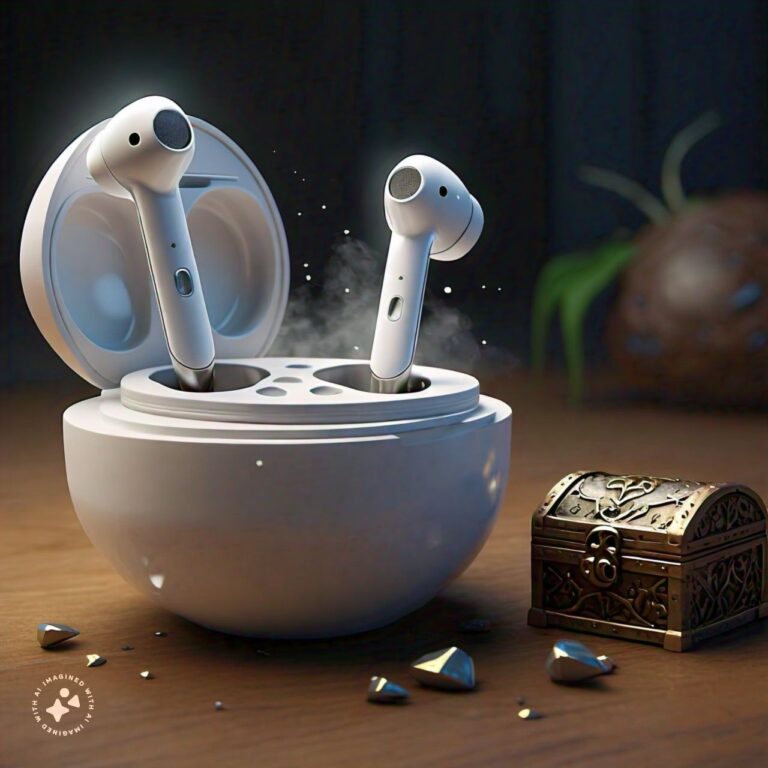Airbuds, the ubiquitous companions of modern life, have revolutionized the way we listen to music and connect with the world around us. But have you ever wondered how these tiny marvels produce such clear and immersive sound? This essay delves into the fascinating world of airbud technology, unveiling the magic behind their wireless functionality.
The Power of Tiny Drivers: Transforming Electrical Signals into Sound
At the heart of every earbud lies a miniature marvel: the driver. This small component plays a crucial role in converting electrical signals into audible sound. Most earbuds utilize a dynamic driver, which consists of a thin diaphragm (often made of plastic or metal) suspended within a magnetic field. When an electrical signal from your device reaches the earbud, the coil within the driver interacts with the magnetic field, causing the diaphragm to vibrate. These vibrations create sound waves that travel through the air and reach your eardrums, allowing you to hear your music, podcasts, or audiobooks.
The Wireless Connection: Bluetooth – A Bridge Between Device and Ear
Gone are the days of tangled wires. Airbuds connect to your device wirelessly using Bluetooth technology. Bluetooth works by establishing a short-range radio connection between your device (smartphone, tablet, laptop) and the earbuds. The device transmits the audio signal as a digital stream and the earbuds receive and decode this information. Bluetooth technology utilizes specific frequencies to transmit data, ensuring minimal interference from other wireless devices in your vicinity. The specific version of Bluetooth used by your earbuds can impact factors like range, connection stability, and power efficiency.
Decoding the Signals: The Role of the Digital-to-Analog Converter (DAC)
The audio signal received by the earbuds is still in digital format. However, the driver needs an analog signal to produce sound. This is where the Digital-to-Analog Converter (DAC) comes into play. The DAC converts the digital audio stream back into an analog electrical signal that the driver can understand. The quality of the DAC significantly impacts the sound quality of your earbuds. Higher-quality DACs can provide a more accurate and detailed listening experience.
Powering the Music: Understanding Earbud Battery Life
Airbuds rely on rechargeable batteries to function. Battery life varies depending on the specific model and usage patterns. Factors like listening volume, features like active noise cancellation, and the type of audio being played can impact battery life. Most earbuds offer several hours of playback on a single charge, with some premium models boasting extended listening times. The charging case typically provides multiple full charges for your earbuds, ensuring you don’t run out of power on the go.
Additional Features: Exploring the Expanding World of Airbuds
Modern earbuds go beyond basic music playback. Many models boast built-in microphones, allowing you to make and receive calls hands-free. Active noise cancellation (ANC) technology utilizes microphones and clever processing to reduce unwanted background noise, creating a more immersive listening experience. Touch controls on the earbuds themselves allow you to manage playback, answer calls, and adjust volume without reaching for your device. Some earbuds even integrate with virtual assistants like Siri or Google Assistant, offering voice-activated control over your music and device.
Understanding the Limitations: Signal Interference and Connection Range
Despite their technological prowess, earbuds have limitations. Bluetooth connections can sometimes experience interference from other wireless devices, leading to dropped connections or audio stuttering. The range of the Bluetooth connection can also be a factor, with some models experiencing connectivity issues at greater distances from the source device. However, advancements in Bluetooth technology are constantly improving connection stability and range.
Looking Ahead: The Future of Earbud Innovation


The future of earbuds is bright. Researchers are constantly innovating, exploring technologies like improved sound quality, extended battery life, and seamless integration with health and fitness trackers. Additionally, the development of truly wireless earbuds, completely free of charging cases, is on the horizon. As technology continues to evolve, we can expect even more exciting features and functionalities to emerge in the world of earbuds.
Frequently Asked Questions (FAQ):
- What is the difference between wired and wireless earbuds?
Wired earbuds connect to your device using a physical cable, while wireless earbuds utilize Bluetooth technology for a cable-free listening experience.
- How do I improve the sound quality of my earbuds?
Investing in earbuds with a high-quality DAC can significantly improve sound quality. Additionally, ensuring a proper fit for your ears can create a better seal and enhance the listening experience.
- How long do earbuds typically last on a single charge?
Battery life varies depending on the model, but most earbuds offer several hours of playback. Charging cases often provide multiple full charges for your earbuds.
By understanding the components and technologies at play, you can appreciate the intricate workings of these tiny technological marvels.pen_spark


